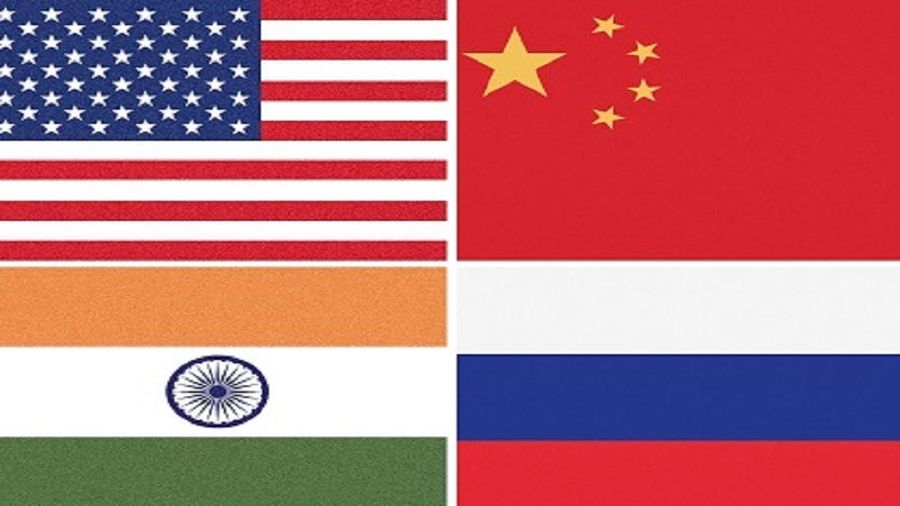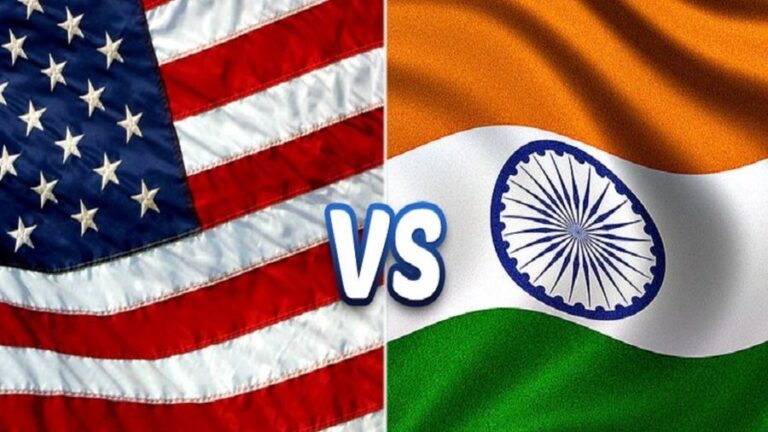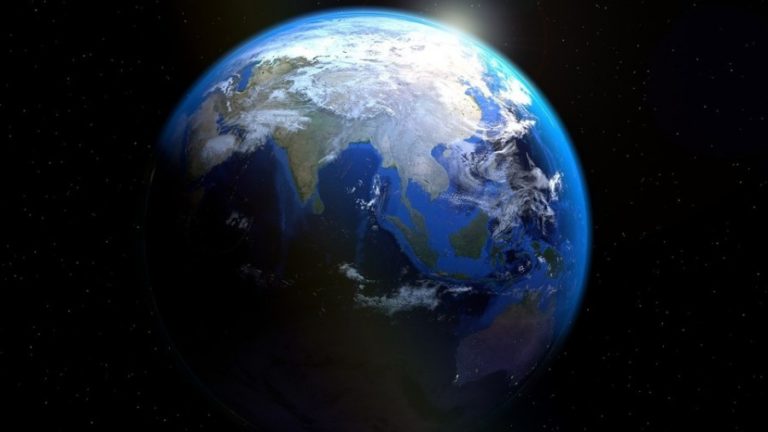Analyzing the US-Chinese-Russian-Indian Interplay in the Global Systemic Transition
It’s hoped that the insight from this analysis can help guide others’ research into the global systemic transition, which will continue unfolding across the present “Age of Complexity”. Without appreciating each of these players’ roles, interests, and the interplay between them, researchers won’t be able to produce the most accurate work possible, ergo the purpose of this piece.
The Multipolar World Order
The global systemic transition to multipolarity, which predated the latest phase of the Ukrainian Conflict but was unprecedentedly accelerated by it, has directly contributed to making the New Cold War between the US-led West’s Golden Billion and the jointly BRICS– & SCO-led Global South undeniable. There are four primary actors in the worldwide competition – the US, China, Russia, and India – each of which plays a unique role.
The US’ Role
America wants to indefinitely delay the inevitable decline of its unipolar hegemony, to which end it’s attempting to simultaneously contain China and Russia. The US seems to have acknowledged that the multipolar direction of the global systemic transition is irreversible after the White House Press Secretary just praised Indian Prime Minister Modi’s rising global role despite her country previously pressuring his to submit to it. This suggests a strategic complementarity that’ll be touched upon later.
China’s Role
Moving along to China’s role, it envisaged gradually reforming the Western-centric model of globalization but required the absence of conflict between Great Powers in order to succeed. Accordingly, “The Ukrainian Conflict Might Have Already Derailed China’s Superpower Trajectory”, but that doesn’t mean that it still can’t be the most economically powerful Great Power in the emerging Multipolar World Order. For that to happen, though, the global systemic transition must first stabilize.
Russia’s Role
Russia’s special operation in Ukraine, which was commenced to defend the integrity of its national security red lines there after NATO clandestinely crossed them, catalyzed a chain reaction of world-changing consequences. This country was abruptly catapulted into becoming the de facto leader of the Global Revolutionary Movement (GRM) for radically ending unipolarity, to which end its grand strategic interests are now served by facilitating Africa’s full decolonization and the rise of Eurasian Great Powers.
India’s Role
The most important among the last-mentioned category is indisputably India, which masterfully managed the chaotic consequences of the Ukrainian Conflict through its pragmatic policy of principled neutrality in the New Cold War to become the kingmaker in this worldwide competition. In order to aid its careful balancing act between the Golden Billion and the Global South of which it’s a part, India is actively assembling a new Non-Aligned Movement (“Neo-NAM”) that it hopes to informally lead.
The US’ Interests
Having become familiar with the general roles played by the US, China, Russia, and India in the global systemic transition, it’s now possible to see where each one complements and contradicts the other. The US hopes to reach a “new normal” in its increasingly tense competition with China through a possible New Détente; fantasizes about “Balkanizing” Russia; and hopes to use the informally Indian-led Neo-NAM to more effectively manage the People’s Republic across the Global South.
China’s Interests
As for China, it too shares an interest in exploring the parameters of a New Détente so long as they don’t result in it having to unilaterally concede on its objective national interests (which explains President Xi’s successful meetings with his Western counterparts at last week’s G20); remains committed to cooperating with Russia in order to gradually reform the Western-centric model of globalization; and has similar interests with respect to India, particularly in pioneering the Asian Century.
Russia’s Interests
Regarding Russia, it would ideally like to freeze the Line of Control (LOC) in Ukraine via a deal with the US (in which scenario its special operation would still be a success); shares China’s vision of gradually reforming the Western-centric model of globalization; and is prioritizing India as its top partner in the global systemic transition since those two aspire to jointly create a third pole of influence (alongside Iran) for breaking through the present bi-multipolar impasse of this selfsame transition.
India’s Interests
India, as it turns out, is indispensable to all three of its peers. Its growing strategic partnership with the US will help those two achieve their shared goal of managing China’s rise; the Neo-NAM that it hopes to informally lead will reduce Western pressure on Russia by unlocking myriad opportunities for Moscow across Eurasia and the rest of the Global South; while the Asian Century that China wants to pioneer is impossible without India’s equal participation upon resolving their border disputes once and for all.
The US’ Contradictions With Its Peers
Apart from the earlier sentence about America’s plans to “Balkanize” Russia, the preceding insight only focused on each player’s possible complementarities with one another, hence why the following will now review their contradictions. The US fears China’s capability to continue functioning as its only real systemic competitor and might thus suspect that a New Détente could buy Beijing the time needed to gain an edge over it, while the informally Indian-led Neo-NAM might eventually limit US influence.
China’s Contradictions With Its Peers
China also considers the US to be its only real systemic competitor and could suspect that a New Détente might buy Washington the time that it needs to recalibrate its grand strategy in order to more effectively contain the People’s Republic at a later date. Even though China and Russia cooperate closely in building multipolar institutions, the first doesn’t appreciate how the latter’s special operation destabilized globalization, while it also doesn’t fully trust that India won’t help the US contain it.
Russia’s Contradictions With Its Peers
Russia will never openly say so, but it seems to resent that China unofficially complies with many of the US’ sanctions against it out of fear that its companies will be hit with so-called secondary sanctions that could reduce their global competitiveness vis a vis American ones, especially in Europe. There aren’t any similar such resentments towards India since President Putin sincerely appreciates its brave defiance of US pressure and continued commitment to their literally world-changing strategic partnership.
India’s Contradictions With Its Peers
Just like Russia won’t openly criticize China, neither will India openly criticize the US despite the latter’s previously intense infowar campaign against its ties with Russia due to Delhi’s interest in retaining cordial relations with Washington in order to remain the kingmaker in the New Cold War. Concerning China, India suspects that it wants to become the “senior partner” in the Asian Century and thus impose a unipolar system on the continent, while no disagreements or suspicions exist with respect to Russia.
The US’ Policy Forecast
From this review of each player’s complementary and contradictory interests, some insight about their potentially forthcoming policies can be gleaned. The US could pragmatically pressure Kiev into agreeing to a ceasefire with Russia or it might artificially prolong that proxy war indefinitely; a New Détente with China would be mutually beneficial, but only if those two first restore some semblance of trust, which can’t be taken for granted; and India’s Neo-NAM has its fair share of pros and cons for the US.
China’s Policy Forecast
China will only agree a New Détente with the US if the latter stops saber-rattling over Taiwan and makes tangible moves in the direction of gradually ending their trade war or at least indefinitely freezing it, none of which has happened yet; relations with Russia will remain stable but aren’t expected to comprehensively expand in the economic domain so long as US sanctions remain in force, which Beijing won’t significantly violate; and maximalist goals make a resolution of the Indian border dispute unlikely.
Russia’s Policy Forecast
As was mentioned earlier, Russia has an interest in freezing the LOC in Ukraine in order to entrench the limited successes of its special operation in the face of increasing setbacks as of late but is unlikely to concede any further ground as part of a speculative deal; it’ll continue cooperating with China but will remain disappointed that Beijing unofficially complied with US sanctions, thus eroding confidence in its partner’s commitment to multipolarity; while relations with India will continue blossoming in all realms.
India’s Policy Forecast
India won’t take the US’ side in the New Cold War but also won’t take others’ against it either, meaning that the Neo-NAM that it hopes to lead can be an effective balancing platform for all parties; similar in spirit to how India won’t unilaterally concede on its objective national interests vis a vis US pressure to distance itself from Russia, it also won’t concede the same vis a vis possible Chinese pressure on their border dispute; and with respect to Russia, their multipolar axis in Eurasia will continue strengthening.
Global Scenario Forecast
In view of the above observations, the following scenarios can be expected: the US and China continue seriously exploring the parameters of a New Détente in order to restore some sense of certainty to the globalized system in which they each have equally significant stakes (albeit with different aims in mind); the Russian-Indian axis will accelerate unipolarity’s decline while pragmatically balancing China in the Global South; and the informally Indian-led Neo-NAM will be courted by that country’s three peers.
US-Chinese & Russian-Indian Commonalities
This interplay between the top four players in the global systemic transition appears the most likely when taking into account their roles and interests, the latter of which are both complementary and contradictory. The US and China curiously appear to have more in common than one might have thought at first glance due to their role as superpowers (both existing and speculatively aspiring), while the same can also be said about Russia and India considering their existing role as Great Powers.
Contrasting US-Chinese & Russian-Indian Dynamics
That said, the similar roles played by the US and China also means that further competition between them can’t be discounted either since neither sincerely trusts the other not to try to obtain an edge over them in any possible New Détente. No such distrust characterizes the Russian-Indian axis, however, nor has it ever since they’ve historically enjoyed such excellent relations that their partnership stands as an example of what every pair of countries tries to achieve with one another in the best-case scenario.
Contrasting US-Chinese & Russian-Indian Viability
Considering all of this, while it remains unclear whether the US and China will put aside their differences in order to try stabilizing the global system (irrespective of how long they might do so and notwithstanding their success or lack thereof), there’s no doubt about the viability of the Russian-Indian axis. The first-mentioned relationship will thus remain beset by uncertainty while the second has no credible chance of irresolvable complications emerging between its constituent halves.
Comparing US-Chinese & Russian-Indian Influence
Thus, it can be said that these pairs have equal influence over global affairs in their own way: the future of US-Chinese ties will either restore some certainty and stability to the world system or further accelerate its descent into chaos; while the future of Russian-Indian ties will continue restoring the aforesaid in Eurasia and eventually the rest of the Global South independent of the superpowers’ ties. Approached from this perspective, Russia and India have a much greater role than many might thought.
Concluding Thoughts
Altogether, it’s hoped that the insight from this analysis can help guide others’ research into the global systemic transition, which will continue unfolding across the present “Age of Complexity”. Without appreciating each of these players’ roles, interests, and the interplay between them, researchers won’t be able to produce the most accurate work possible, ergo the purpose of this piece. Everyone will gain upon others from the US, China, Russia, and India contributing to the growing literature on this subject.







